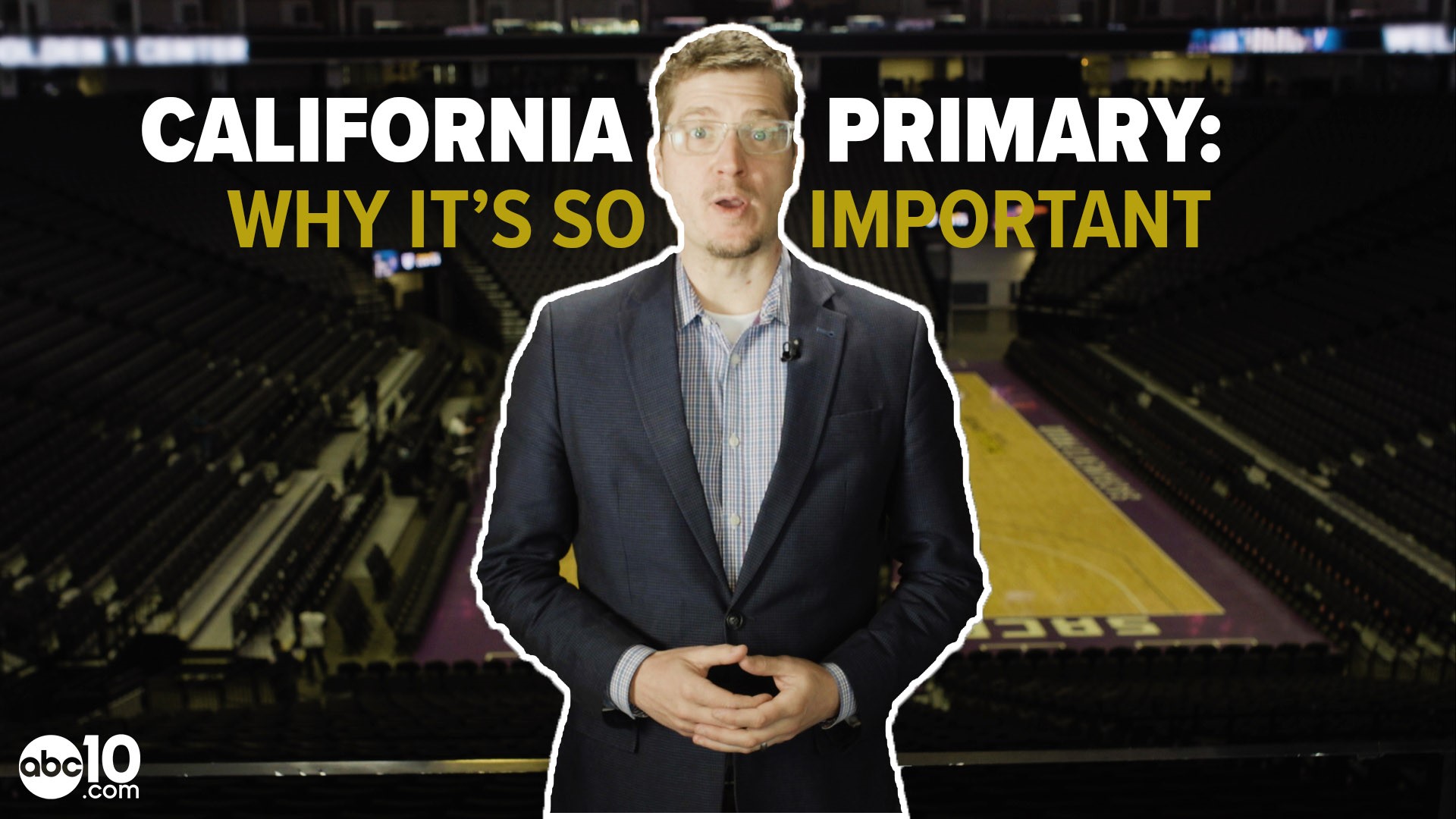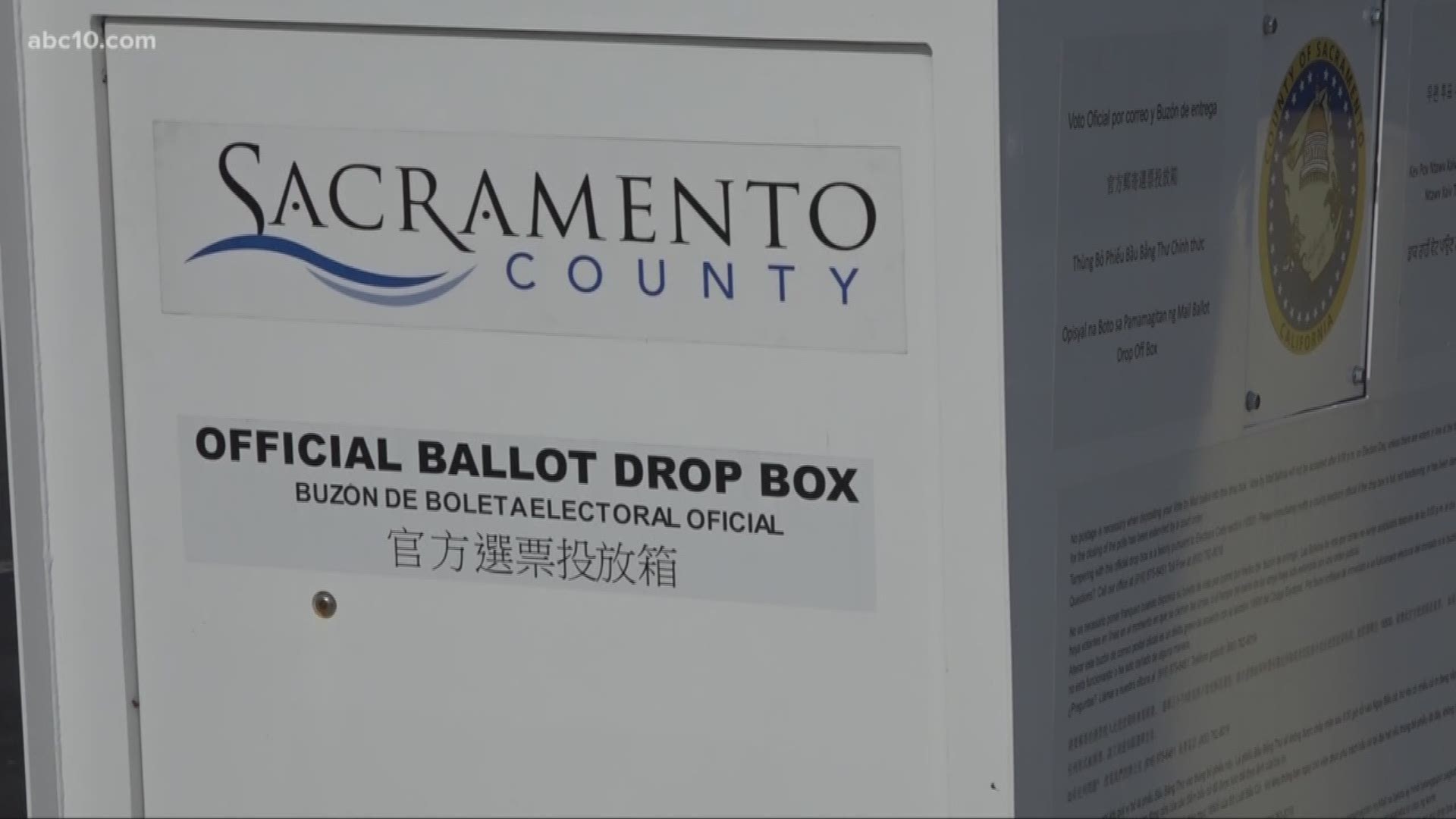SACRAMENTO, Calif. — This year is the first year since 2008 that California is participating in Super Tuesday politics as part of the primary election process.
In 2017, Gov. Jerry Brown signed it into law, moving the state's primary from June to March, so that the millions of California voters can affect the election season more than being the last in the nation to vote.
With this historic presidential primary coming up on March 3, here are some things to refresh your memory about voting in California to make sure your voice is heard.
► Check back HERE for results on election day.
Getting your ballot
People can register to vote by Feb. 18 to get a traditional ballot in California.
Any California county elections office can register a person who meets the eligibility requirements of being a U.S. citizen, a resident of California, at least 18 years old on Election Day, not in prison or on parole, and not prohibited from voting by a court.
When you are at the county office, officials can give a registered voter a vote-by-mail ballot on the spot regardless of when you go. If a person needs to register on Election Day, the voter could register at the poll or voting center and vote.
Check your party preference
If voters haven't yet confirmed the political party they are registered under, they could do so on the Secretary of State website.
For the presidential primaries, people not registered for a party will not automatically be able to vote for a specific party.
If voters registered as having no party preference, they could vote in the Democratic, American Independent, or Libertarian party's election. Voters can request a cross-over ballot at the county elections office or over the phone, email or fax with the voter's local county election officials.
If these voters wish to vote in the other party's election, they will need to re-register to vote in those parties.
Voters can request the ballot for whichever party they want if they go to the polls on March 3.
Prop 13
The only statewide measure on California's March 3 primary election ballot is Proposition 13, a $15 billion bond to build, repair and modernize schools in California.
If voters approve this proposition, $9 billion would go to K-12 schools to improve the facilities in California. The priority for improvements is on health and safety concerns, including earthquake risks, and removing toxins from classrooms.
The rest of the money would go towards public, higher education facilities.
Teacher's unions, firefighters and doctors are supporters of this proposition.
Proposition 13 is the only statewide initiative for the presidential primary ballot.
Where to vote and drop off mail-in ballots
Voters should refer to their local county election's office to find where is the proper location for a voter's polling location.
For most counties, voters can mail in the ballot, drop it off at the county office or wait until Election Day to drop it off at the nearest polling location. In most cases, Californians do not need to show ID when voting.
Sacramento, San Joaquin, Stanislaus, Yolo, El Dorado and Nevada counties offer multiple places where people can go to drop off the mail-in ballot.
Voters can receive alerts as to where their ballot is in the counting process by signing up with the Secretary of State's new feature, "Where's My Ballot?".
Sacramento county
Locations labeled with a red-letter icon are where voters in Sacramento county can drop off the vote-by-mail ballot. Blue markers are voting centers that open February 22. Orange markers are locations that open February 29.
San Joaquin county
Locations, where voters in San Joaquin county can drop off their mail-in ballot, are indicated with a red-letter icon.
Stanislaus county
Locations, where voters can drop off mail-in ballots in Stanislaus county, are indicated with a red-letter icon.
Yolo county
Locations, where voters can drop off mail-in ballots in Yolo county, are indicated with a red-letter icon.
El Dorado county
Locations, where voters can drop off mail-in ballots in El Dorado county, are indicated with a red-letter icon. Voter centers that open February 22 are indicated with a blue marker, while centers that open February 29 are indicated with an orange marker.
Nevada county
Locations, where voters can drop off mail-in ballots in Nevada county, are indicated with a red-letter icon. Vote which open Feb. 29 are shown with an orange marker.
Democratic and Republican candidates still in the running
California finalized its ballot in January, and people already started voting if they have a mail-in ballot. However, candidates are dropping out of the race.
Here is a graphic with candidates who are still in the race for president:
Other election changes
Aside from the new primary Election Day, California has a few new laws which went into effect this year.
Some of the new election laws include:
- Polling locations can be at college campuses.
- Voters should have received vote-by-mail ballots 29 days before the election.
- Employers cannot request employees to bring ballots to work.
FOR NEWS IN YOUR COMMUNITY, DOWNLOAD THE ABC10 APP:
►Stay In the Know! Sign up now for ABC10's Daily Blend Newsletter




